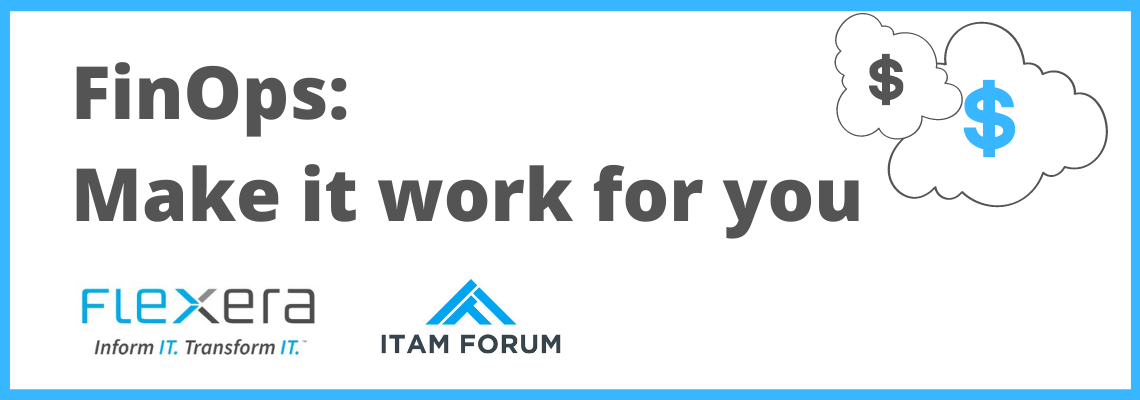This blog is from Brian Adler, Senior Director, Cloud Market Strategy, Flexera (an ITAM Forum Patron)
Bringing financial accountability to the cloud
In today’s environment, it seems as though there’s always another “ops” on the way. In fact, it’s common slang among techies to use “YA” (yet another) in front of the latest and greatest industry acronym.
From the early days of the union of cloud computing and the agile development methodology, we were introduced to the concept of DevOps. Then we saw the evolution of security tools and automation gave rise to SecOps, which then eventually led to DevSecOps. And of course, the maturation of artificial intelligence and machine learning tools introduced us to AlOps.
Alas, now we have FinOps; but what exactly is it?
It starts with visibility
FinOps is all about good cloud financial hygiene and the aggregation and integration of all the entities involved. This includes everything involving tracking, analyzing and optimizing the costs incurred with cloud usage. FinOps practitioners have identified three phases of the FinOps journey: inform, optimize and operate.
Cloud financial management begins with visibility. To determine where and what is being spent in the cloud – and therefore, where one can optimize – an organization needs to have tools and processes in place to give all relevant stakeholders this comprehensive view.
Data-driven insights fuel optimization
Armed with the information gathered in the inform phase, you can begin to optimize cloud spend. With full visibility into your multi-cloud infrastructure, you can identify areas of wasted spend and potential optimization. According to Flexera’s 2022 State of the Cloud Report, organizations self-estimate they’re wasting 32 percent of their cloud spend. That’s a lot of waste—and it’s expected to increase.
Giving users the knowledge of their consumed resources empowers them to identify and address areas of waste. Cloud optimization also includes the following: usage of provider discounts to achieve cost savings, i.e. Reserved Instances, Savings Plans, and Committed Use Discounts. Non-production resources can be amenable to scheduling so they don’t run during off-hours when they’re not needed.
However, unless you have the visualization acquired in the inform phase, you cannot take advantage of these savings opportunities.
Leverage technology in the operate phase
Technology comes into play in the operate phase of your FinOps journey. By leveraging lessons learned in the inform and optimize phases, you can identify and track metrics that indicate adherence to, or deviation from, your FinOps goals.
Looking to learn more about FinOps?
- Read our blog: The what and why of FinOps
- Access our FinOps webinar on demand (members, please log in)

